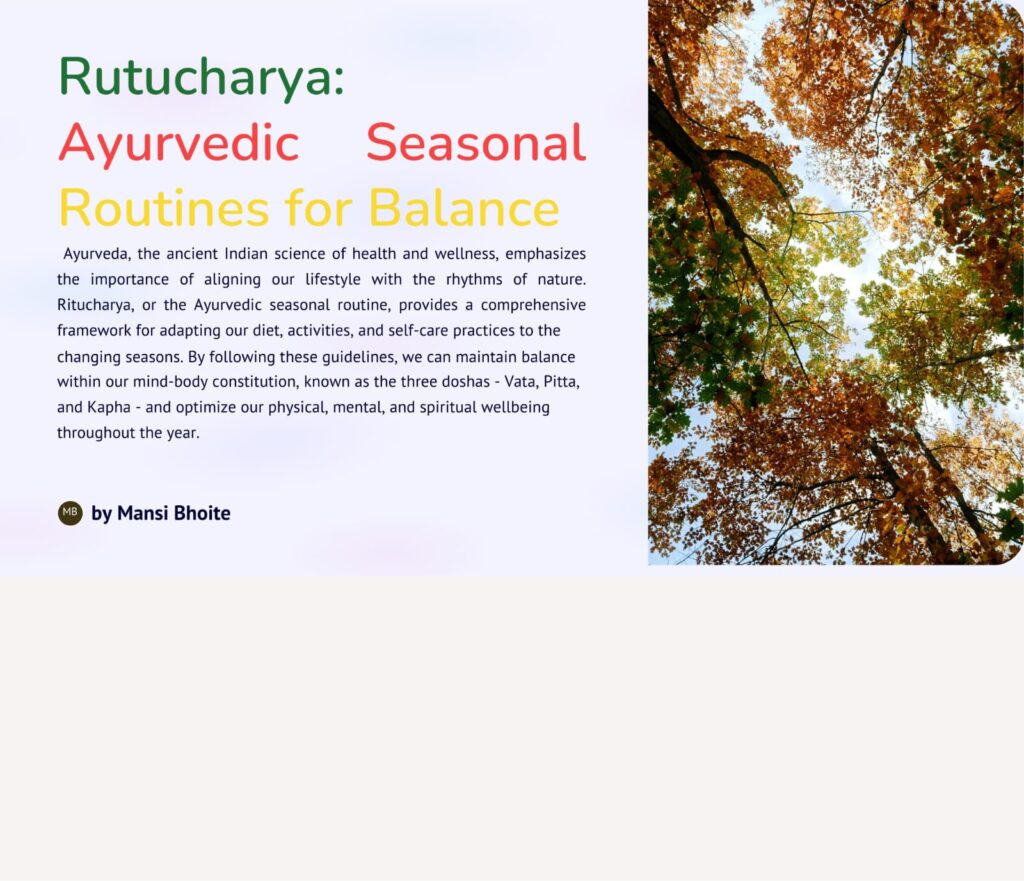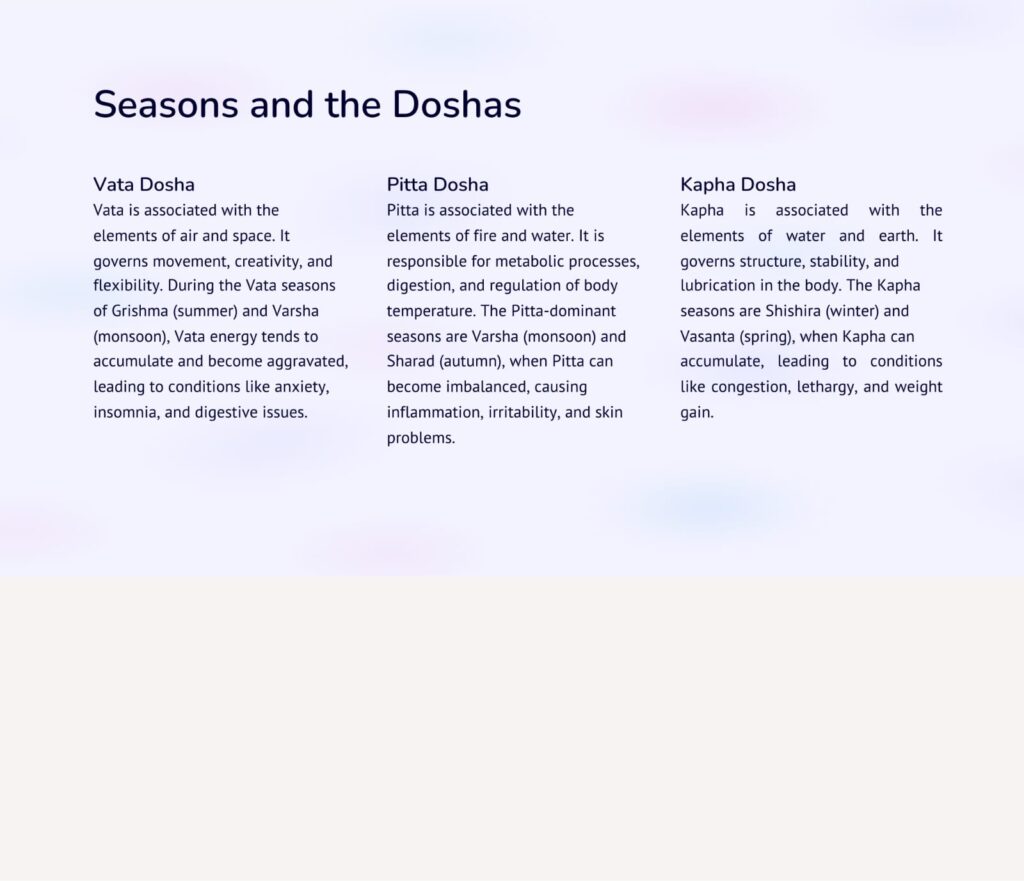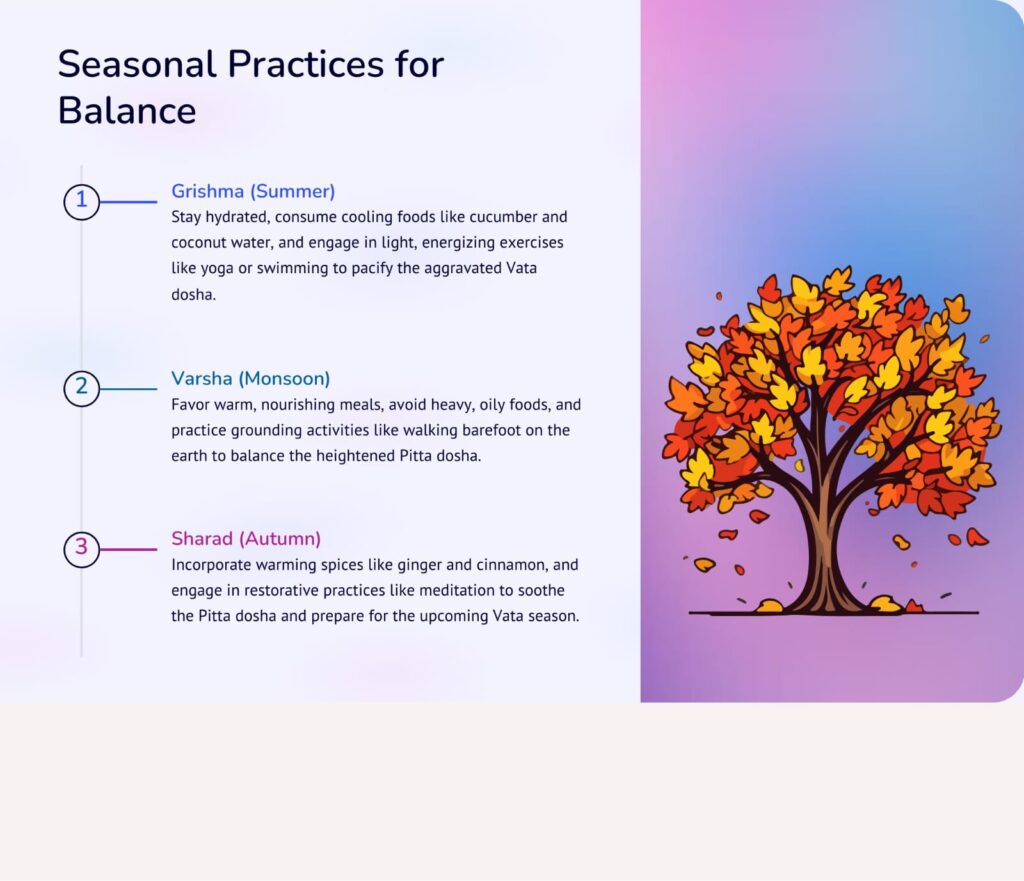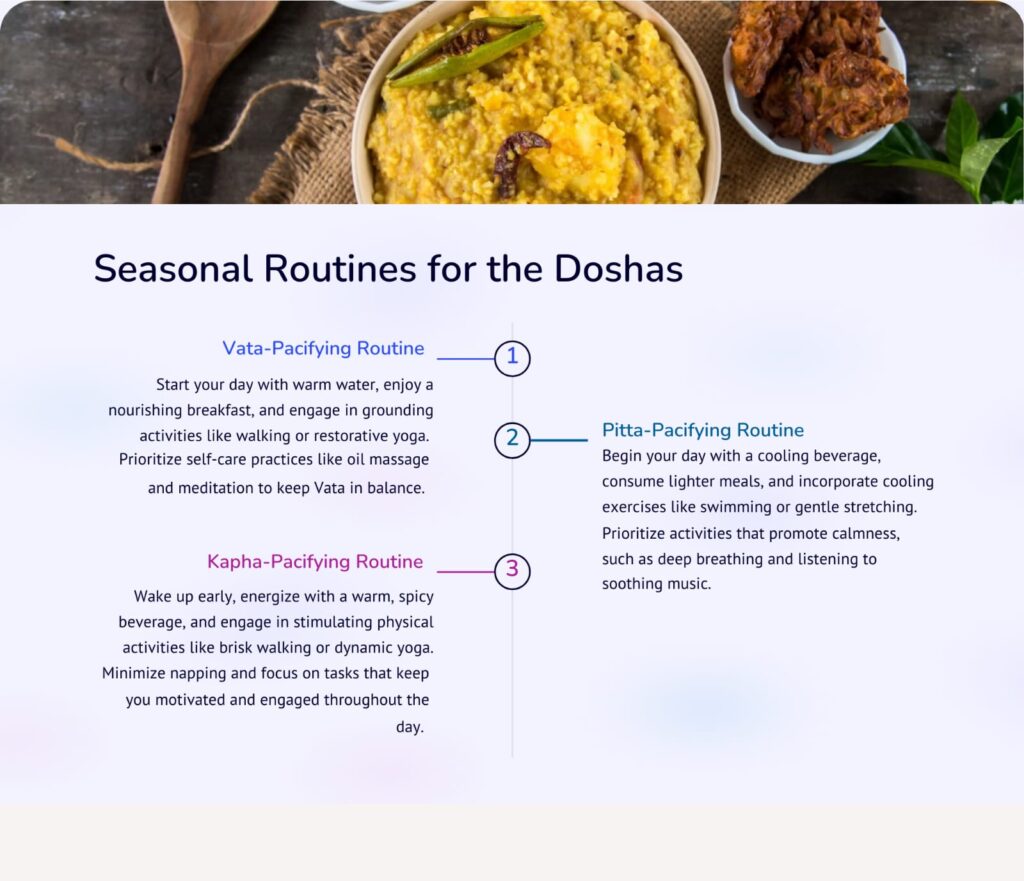
Varsha Ritu
(mid-July to mid-September) marks the rainy season, a period of Pitta accumulation and Vata provocation. In Ayurveda, this season calls for special attention to our diet and lifestyle to harmonize with nature.
Why RituCharya?
As described in Ashtanga Hridaya Sutra, RituCharya involves adapting our diet and activities to seasonal changes. This alignment helps prevent diseases caused by the seasonal imbalance of doshas (Vata, Pitta, Kapha).

Diet for Varsha Rutu:
– Warm, freshly-cooked meals: Avoid uncooked foods to support your digestion.
– Ginger and lemon: Incorporate these to aid digestion.
– Thin soups: Light and easy to digest, perfect for this season.
– Unctuous foods: Include fats, oils, and slightly sour and salty tastes.
– Old grains and rice: Harvested and stored for over 60 days.
– Vegetables: Pumpkin, bottle gourd, drumstick, ridge gourd, garlic, fenugreek.
– Dals and rice preparations: Khichadi, kadi, rice gruels, simple jeera rice.
– Ghee and milk: Essential to sustain metabolism.

Pre-Meal Tip: Chew a small piece of ginger, jaggery, or rock salt to enhance digestion.
Warm Drinks: To kindle digestive fire:
– Boiled water
– Ginger water
– Cumin water
– Coriander water
Align with nature this monsoon to boost your immunity, enhance digestion, and maintain overall health. 🌿🌧️

It is the season of Pitta accumulation /Sanchay and and Vata provocation/ Prakop.
Varsha Ritucharya:
This season, with earth and fire energies rising to the forefront. Your agni is heavily dampened during this season, so it’s time to get that fire roaring again.
Although you want your digestive fire to begin to pick up, avoid heavy foods and transition slowly through the season. The ideal Varsha diet avoids uncooked foods and favors warm,
freshly-cooked meals. Help your digestion out with ginger and lemon, and eat a lot
of thin soups.

What is RituCharya ?
ऋतुवशेषवशाच्च आहारवहारसेवानप्रतपादनाथर्थं ऋतुचयार्षाया: ।
There are changes in environment and humans in every season and
hence certain foods and exercises are specifically told for each season, this process is
as Ritucharya

चय-प्रकोप-प्रशम: वायो: ग्रीष्मादषु त्रषु ।
वषार्षा दषु तु पत्तस्य श्लेष्मण: शशरादषु ।।
When these Doshas get deranged, they cause diseases based on the Srotus (organ system or channels in our body) that it affects to a particular individual. For eg.
bronchitis in winter, stomach infections in monsoon, in individuals prone to
these diseases. To bring back these deranged Doshas into normalcy, seasonal
regimens are to be followed

“यत् पिण्डे, तत् ब्रह्माण्डे
(whatever there is in the
The environment is also there is the human body) according to seasons and regimens
were made accordingly.
Seasonal regimens main aim was to prevent diseases due to seasonal
derangement of doshas. Hence Rutucharya is one of the ways to be in sync
with ever-changing nature.

